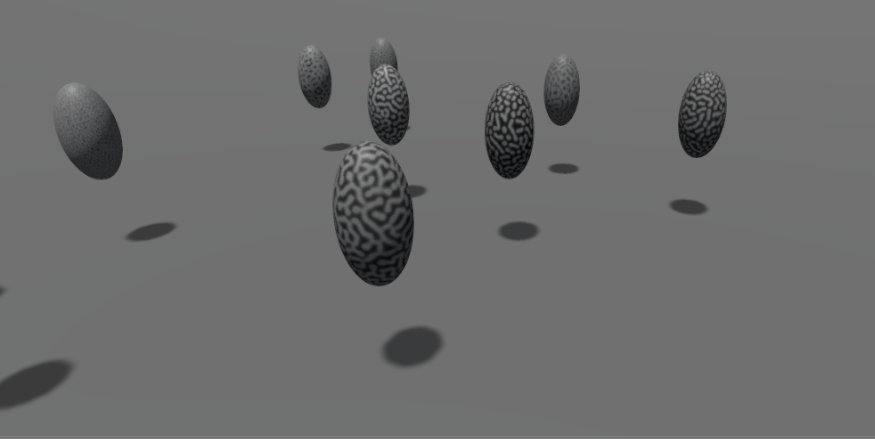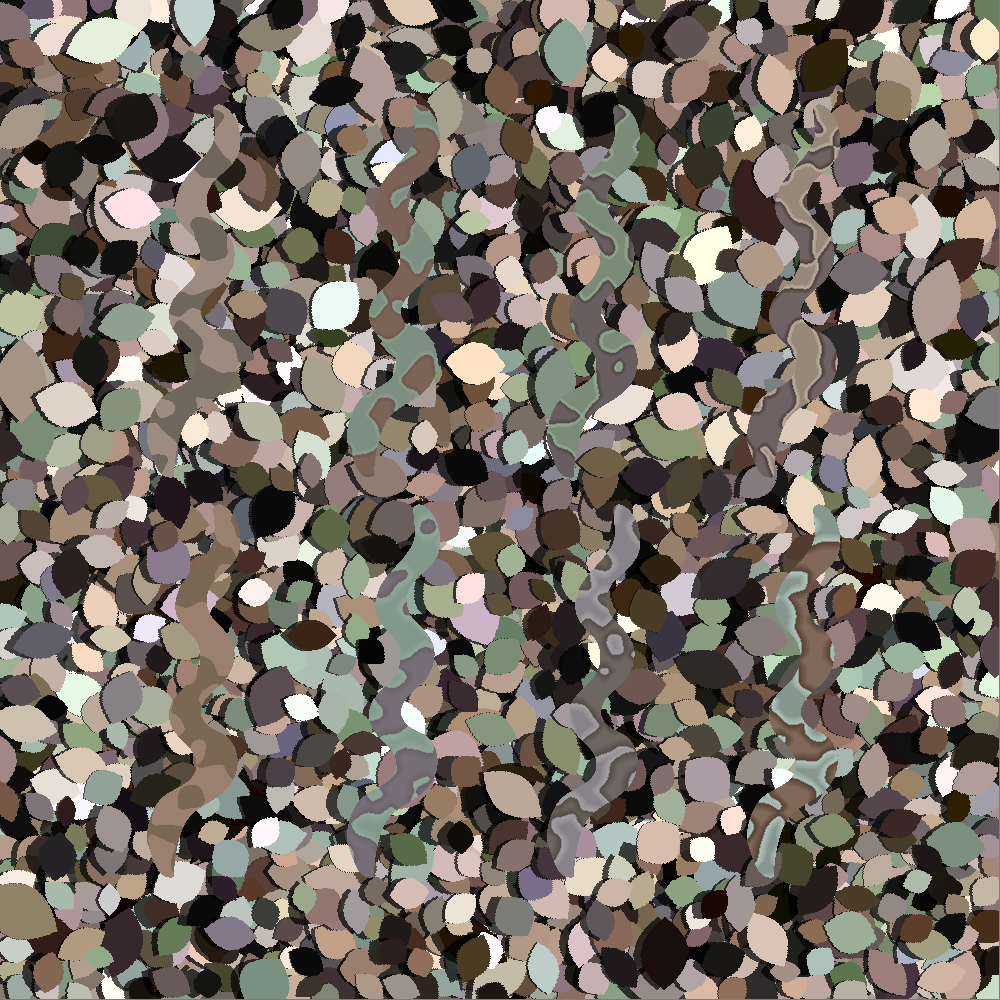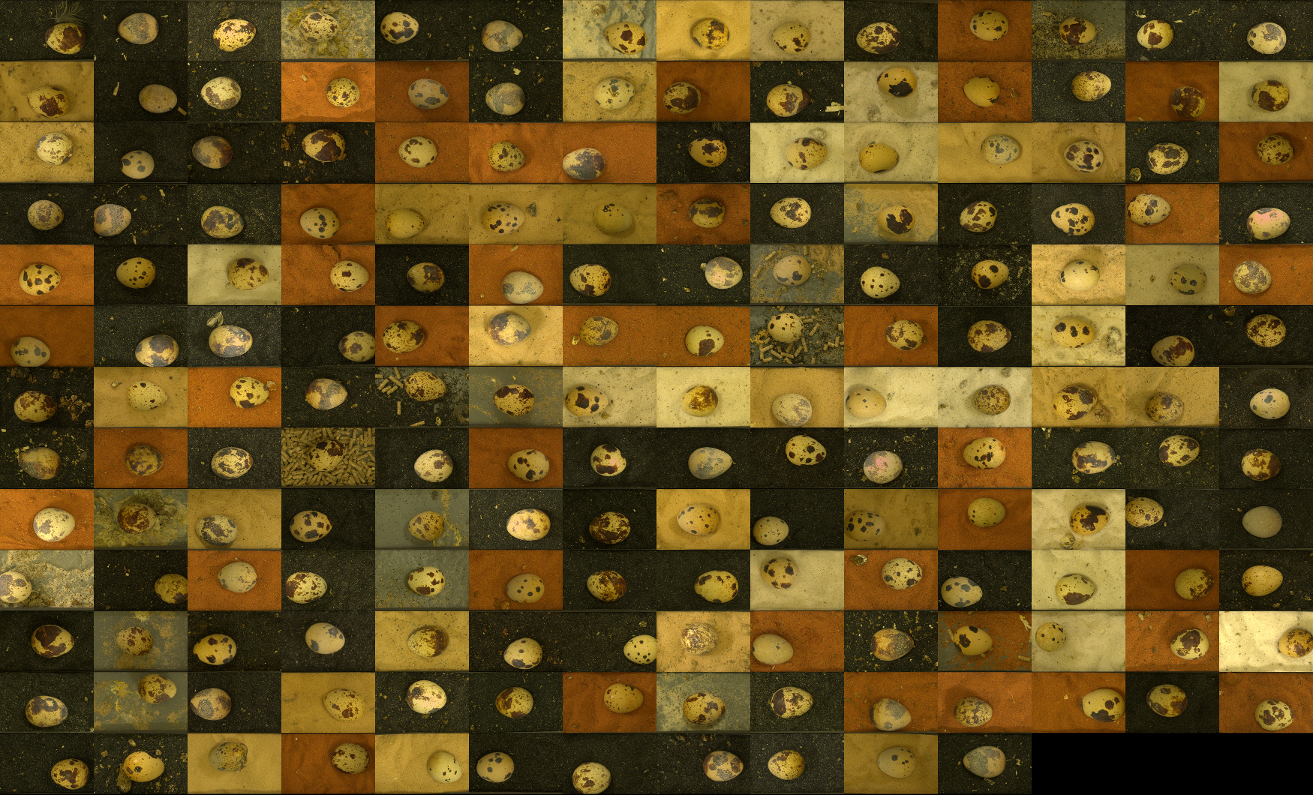Summaries of Research Projects
This section will try and summarise various research projects, some complete and others ongoing.
Using Virtual Reality To Explore Camouflage and Colouration
The lab has some new equipment: An HTC Vive VR system and some lovely new software developed by two students of the Abertay's AMG faculty. The software, currently called ScamperVR (Search ColourAtion Movement PattERn Virtual Reality), allows us to place 3D objects in a scene and have participants explore the scene and select items. The software records the location of objects and participants throughout experimental trials, enabling a sophisticated analysis of motion and choices in the VR environment. Special thanks to the programmers Gary McCartan and Stewart McCready!

Edge-enhancement in disruptive colouration.
Disruptive colouration is a common form of camouflage which features contrating patches across the body surface which seem to break up the body shape with the consequence that detection and perhaps identification is harder. A subset of animals with disruptive colouration also feature edge-enhancement. Here the contrast between patches is more pronouced due to the lighter or darker outline at the boundary between patches. We've (myself, Rebecca Sharman, Ken Scott-Brown and John Egan) have been exploring the role of edge-enhancement in a visual search task. Can you see the hidden snakes below?

Why did the zebra get it's stripes?
The patterning on the zebra has for a long time been supposed to be involved in some kind of cryptic role. The popular conception is that having stripes makes it difficult to track an animal in a herd - known as the confusion effect. Other theories suggest that the colouration helps to protect the zebra from biting flies, and it does this by interfering with the primative vision of flies. Of course, both theories could be true, the striped pattern could disrupt both fly vision and lion vision. Myself and Nick Scott-Samuel decided to create a video game to try and establish whether chasing zebra striped animals might be harder than chasing animals with other colouration patterns. Boid Runner pits the player against a herd of zebra, can you follow a particular target as they run amongst each other in a herd? You can download the game here <Download-Link>. Once it's downloaded unzip the file into a suitable destination. In order to run the game you need to install Panda3D. If you download and install the Panda3D Runtime for End-Users you should be able to run boidRunner from the unzipped folder you created. Just open the folder and click the icon named "RunZebraChase". If that doesn't work you can run the game by opening up a command window. Then navigate to the folder containing "main.py" using "CD c:\downloads\boidRunner\" (change the folder name so that it matches your unzipped directory). Then type "ppython main.py", this should run the game.

Countershading camouflage.
The colouration of many animals is countershaded, these animals usually present a darker surface towards the sun and a lighter surface towards the ground. There are many accounts for this type of colouration and a few of them are concerned with camouflage. Firstly, countershading may simply be due to thermoregulation, an animal may attempt to control temperature across it's body surface by being differently coloured. Secondly, colouration may be due to an attempt to prevent UV damage, pigmented skin is less likely to be sunburned. Thirdly, by varying colouration across our bodies we may be able to conceal ourselves better. This final hypothesis can be subdivided further, we may simply be background matching, we might want to match the sky above us and the dirt below us. Or we might be matching the ground below us but with the constraint that we don't want to pigment surfaces that aren't seen, i.e. the belly. Finally, countershading might be doing something even more sophisticated, perhaps countershading is an attempty to conceal our true 3D form? Humans and other animals can perceive the 3D shape of objects in the world by using surfacing shading as a cue towards shape. Perhaps countershaded animals are trying to conceal this cue towards their identity?
In this BBSRC funded project we explored countershading from first principles:
Can lighting simulations help us to distinguish between the different accounts of countershading?
How does might countershading conceal shape in different light environments, as weather and time of day varies.
How well matched to their environments are different species of countershaded caterpillars?
Quail eggs vary a great deal between individuals in the degree of maculation on the surface of the shell. Maculation is another name for the spotting across the eggs surface. Dr Karen Spencer had noticed that it was difficult to locate the eggs laid by the quail in her laboratory and that it seemed that different quail preferred laying eggs upon different coloured backgrounds. We (Graeme Ruxton, Karen Spencer and then research-assistant Keri Langridge) decided to conduct a study to explore whether it was indeed the case that the quail laid their eggs in order to maximise camoufalge for their individual eggs.
Quail were introduced to an arena with four differently coloured sands for two weeks and we monitored their individual laying choices for every egg laid. We were then able to establish the colour match between the egg and the chosen sand. Furthermore, we were able to measure the visibility of the egg in each potential laying location. For every egg laid we could calculate how benefitial each substrate was in terms of hiding the egg. We learned the following:
1) quail eggs did indeed vary in their degree of maculation, some eggs were very lightly coloured while others were almost entirely dark.
2) eggs tended to be laid on the substrate that was most benefitial in terms of crypsis, i.e. the females knew which substrate to choose to conceal their eggs.
3) not only were particular substrates better for concealing eggs, but different substrates were better for concealing lightly maculated and heavily maculated eggs. The females appeared to be 'know' this and chose optimal substrates.
The image below shows each egg laid during the experiment against the chosen substrate. Darker eggs tend to get laid on darker substrates and lighter eggs against the lighter sand. There was a cross-over point in the data, where eggs were heavily maculated (29%+) the bird chose a subtrate that matched the maculate colour. With less than 29% maculation they chose a substrate that matched the egg background - i.e. the lighter colour of the egg.
